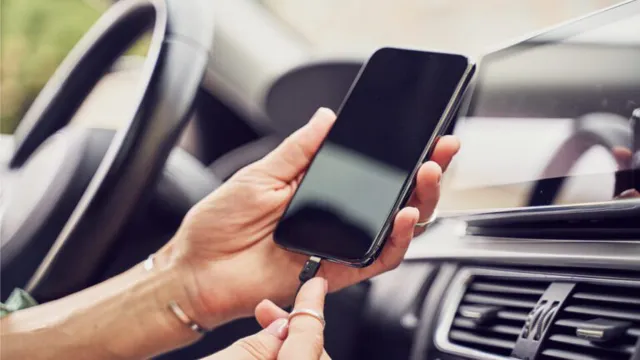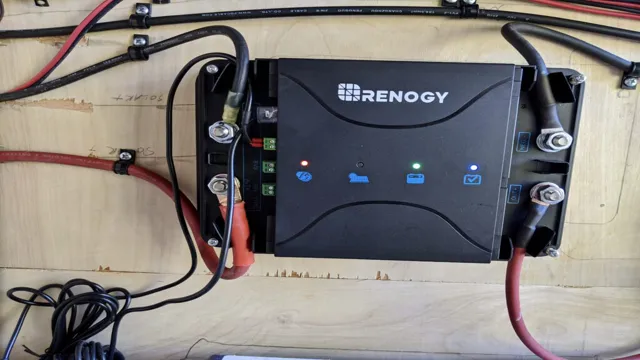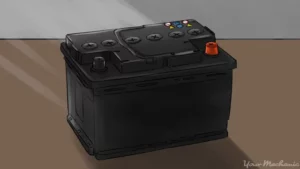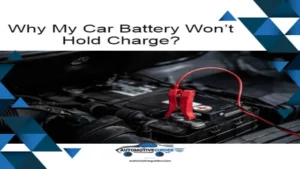Are you wondering if you need to keep your car battery charger plugged in? Well, the short answer is, it depends on the type of charger you have. Some car battery chargers require constant connection to a power source, while others can be disconnected once the battery is fully charged. But why is this important to know? Well, leaving your charger plugged in when it’s not needed can actually harm your battery.
Overcharging can lead to damage or even a complete battery failure. On the other hand, if you don’t keep your battery charger plugged in when necessary, your car may not start when you need it to. So, it’s essential to understand the specifics of your car battery charger and the type of battery you have.
This will help you determine whether your charger needs to be left plugged in or if it can be disconnected. In this blog post, we’ll explore the different types of car battery chargers and their functionalities, helping you avoid any mishaps with your beloved vehicle’s battery.
Understanding Car Battery Chargers
Yes, a car battery charger needs to be plugged in to function properly. These chargers are designed to convert AC power from an electrical outlet into DC power that can be stored in a car battery. Without being plugged in, a charger is unable to draw power from an external source and will not be able to recharge a battery.
It is also important to note that car battery chargers come in different types and capacities, so it is crucial to choose a charger that is compatible with the specific size and type of battery being used. A trickle charger, for example, is a slow and steady charger that is ideal for maintaining a battery’s charge, while a fast charger can quickly bring a dead battery back to life. Ultimately, it is essential to properly understand how to use a car battery charger to ensure that your vehicle’s battery stays healthy and functional.
Types of Car Battery Chargers
Car battery chargers come in different types, and each one serves a specific purpose. One of the most commonly used types is the trickle charger. This charger is designed to be plugged into an electrical outlet and left connected to the car battery for an extended period, usually overnight.
It provides a slow charge to the battery and is ideal for maintaining a battery’s charge during the off-season when the car is not in use. Another type of battery charger is the fast charger, also called a high-output charger. This charger delivers a rapid charge to the battery, making it ideal for jump-starting a dead battery quickly.
However, it can be hard on the battery if used too often, so it’s best to use it sparingly. The third type of charger is the smart charger, also called a multi-stage charger. This charger uses a microprocessor to monitor the battery’s voltage and adjust the charging rate accordingly.
It’s the best type of charger to use as it automatically stops charging once the battery is fully charged, preventing overcharging and potential damage to the battery. Whether you’re maintaining a battery’s charge, jump-starting a dead battery, or charging a new battery, identifying the correct type of charger and using it correctly ensures long battery life and trouble-free motoring.

How Car Battery Chargers Work
Car Battery Charger If you’re having car battery problems, then you may need a car battery charger to get your vehicle back on the road. Car battery chargers are easy to use, and they work by supplying a steady flow of electrical energy to your car’s battery, which gradually recharges it. Car battery chargers typically plug into a wall outlet and come with clamps that connect to your car’s battery terminals.
While charging, the device will monitor the voltage of your battery and adjust the current flow as needed. Some car battery chargers also come equipped with safety features like reverse polarity protection, which prevents damage to your battery in case of incorrect connections. It’s important to choose a car battery charger that’s appropriate for your car’s battery size and charging needs, as well as one that’s from a reputable brand.
With a car battery charger, you can get your car back on the road and avoid the hassle of a dead battery in the future.
Powering Car Battery Chargers
Many people wonder whether a car battery charger needs to be plugged in to work. The answer is yes, it does. Car battery chargers require an external power source to convert AC power into DC power, which is what charges your car battery.
Most car battery chargers come with a plug that you can use to connect to a power outlet. Additionally, you can also use a portable power bank to power your car battery charger. This is handy if you’re in a remote location and there’s no power outlet nearby.
However, keep in mind that the power bank needs to be powerful enough to provide sufficient power to your car battery charger. Overall, whether you’re using a plug or a power bank, you’ll need an external power source to juice up your car battery.
AC vs. DC Currents
When it comes to charging a car battery, the type of current used is crucial. There are two types of currents: AC and DC. AC (alternating current) oscillates back and forth, while DC (direct current) flows in only one direction.
AC is the type of current that is supplied to homes and businesses, while DC is the type of current that is typically used in batteries. Many car battery chargers use DC currents because they are more efficient and can be used to charge both lead-acid and lithium-ion batteries. DC currents are also safer to use, as they do not produce the same level of heat buildup as AC currents.
While AC currents can be used to charge a car battery, they require additional equipment, which can be costly and time-consuming. In the end, choosing a car battery charger with a DC current is often the best option for both efficiency and safety.
Plugging in Car Battery Chargers
Plugging in a car battery charger can be a simple process, but it’s important to do it correctly to avoid any potential hazards. The first step is to make sure the charger is compatible with your car’s battery type, and that the charger is turned off and unplugged before starting. Next, locate the battery terminals and make sure they are clean and free of corrosion.
Connect the positive (red) clamp to the positive battery terminal, followed by the negative (black) clamp to the negative terminal. Once both clamps are securely connected, plug the charger in and turn it on. It’s important to monitor the charger closely and disconnect it once the battery is fully charged to avoid overcharging.
By following these simple steps, you can safely and effectively charge your car battery and ensure your vehicle runs smoothly on the road.
Portable Car Battery Chargers
Portable car battery chargers are a great addition to any car owner’s gear. They are especially valuable when you find yourself in a situation where you need to recharge your car battery and there is no power outlet nearby. These chargers allow you to charge your car battery on the go and provide the necessary power to start your car.
The best part is that they are portable and easy to use. All you have to do is connect the charger to your car battery, and it will do the rest. Portable car battery chargers come in different sizes and capacities, and it is essential to choose one that suits your needs.
The good news is that most chargers are versatile and can be used to charge other devices like smartphones and tablets. To ensure that your car battery charger functions optimally, it is necessary to keep it well-maintained. Regular cleaning and charging will help to extend its lifespan and keep it in good condition.
Ensure that you keep your car battery charger in a safe and secure place when not in use to avoid damage. With a portable car battery charger, you can rest assured that you will never be stranded with a dead battery again.
Safety Measures for Charging Your Car Battery
If you are wondering whether a car battery charger needs to be plugged in, the answer is yes. Most car battery chargers require a power source to work. However, safety should always be a top priority when charging your battery, especially if you are using a fast charger or charging your battery while it is still installed in your car.
Before charging your battery, make sure you follow the manufacturer’s instructions carefully and check for any signs of damage or corrosion. Use a charger with an automatic shut-off feature to prevent overcharging, and never leave the charger connected to the battery for an extended period. Additionally, always wear gloves and eye protection when handling the battery, and keep all flammable materials away from the charging area.
By taking these precautions, you can safely charge your car battery and avoid potential accidents.
Non-Overcharging
Non-Overcharging When it comes to charging your car battery, safety should always be a top priority. Overcharging your battery can lead to serious damage and even cause it to explode in extreme cases. To avoid this, it’s essential to follow some simple safety measures.
Firstly, ensure that you use the correct charger for your battery type, as using the wrong one can cause overcharging. Secondly, monitor your battery’s charging status regularly and unplug it once it’s fully charged. Leaving it plugged in for too long can cause the voltage to rise, leading to overcharging.
Additionally, it’s important to keep your battery and charger away from any flammable materials and in a well-ventilated area to prevent any potential accidents. By taking these simple precautions, you can safely charge your car battery without having to worry about overcharging or any associated risks.
Proper Connection
Proper Connection When it comes to charging your car battery, safety should always be your top priority. One of the most important safety measures is ensuring that your battery is properly connected before charging. This means checking that the positive and negative terminals are properly aligned and securely fastened to their respective cables.
The use of safety gloves and glasses is also highly recommended to prevent any accidental shocks or shorts. It’s also important to choose the right charger for your battery, as using the wrong charger can lead to overcharging and potentially cause serious damage to your vehicle. By taking these simple precautions and paying close attention to the connection and charging process, you can ensure the safety of yourself and your car battery.
Conclusion
In conclusion, a car battery charger does indeed need to be plugged in, unless you happen to have a magical, self-charging battery that runs purely on good vibes and positive thoughts. So unless you’re a wizard or a unicorn, make sure to plug in your charger and let science do its thing!”
FAQs
What type of car battery chargers are available in the market?
There are mainly three types of car battery chargers available: trickle chargers, portable jump starters, and smart chargers.
How does a trickle charger work?
A trickle charger slowly charges the battery over a long period of time and is ideal for maintaining the battery’s charge level during storage.
What is a portable jump starter?
A portable jump starter is a self-contained battery that can jump-start a car battery without needing an external power source.
What is a smart charger?
A smart charger is designed to detect the battery’s state of charge and adjust the charging rate accordingly to prevent overcharging.
Can a car battery charger be left connected to the battery overnight?
It is recommended that you do not leave a car battery charger connected to the battery overnight, as overcharging can damage the battery.
What is the ideal charging rate for a car battery charger?
The ideal charging rate for a car battery charger is between 10% to 20% of the battery’s capacity per hour.
Do you need to unplug a car battery charger after it has finished charging?
Yes, it is recommended to unplug the car battery charger after it has finished charging to prevent overcharging and damage to the battery.






